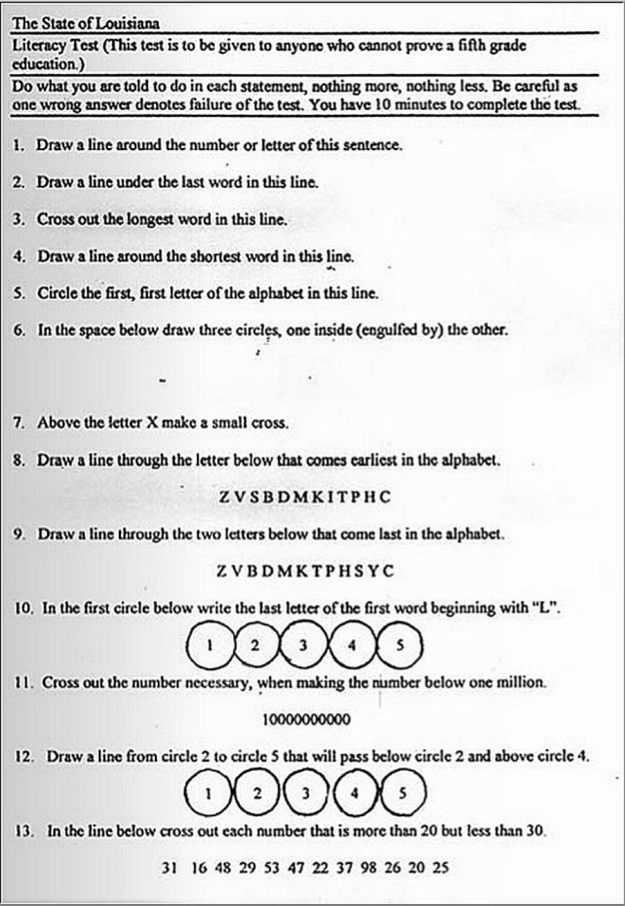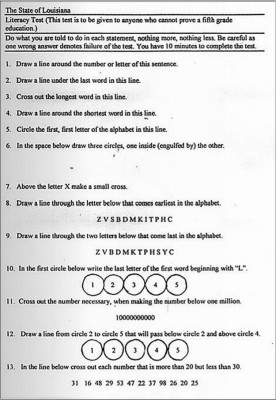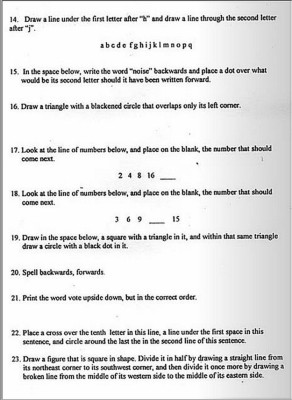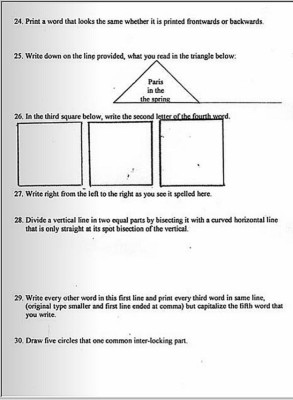In the 1960s African Americans were told that they had to do and pass a literary test in order to register to vote. They had just 10 minutes to complete the 30 question test. While African Americans no longer have to take the test, it was just last week that the US Supreme Court finally amended the law within the 1965 Voting Rights Act that made it compulsory in nine US states, mainly in the south, to seek federal permission prior to amending their voting laws. This means it will be much easier for US states across the country to implement voting laws at a state level that meet the needs of its citizens and voters.
In Louisiana the test was implemented rigorously and if an African American did not finish or got even one wrong answer they would fail immediately. Ironically, the test itself has some spelling errors.
The first section is a test of understanding and asks the test-taker to for example, underline the longest word in the sentence, draw a line under the last word of the sentence, or circle the first letter of the alphabet in the sentence. It also asks takers to draw three circles one inside the other.
The next section focuses more on specific letters and knowledge of the alphabet. It asks test-takers to draw a line thorough the earliest and last letters of the alphabet in a set sequence of letters.
Then the questions get tricky even for a fluent English speaker, as they turn to incorporate numbers into the test: ‘In the first circle below draw write the last letter of the first word beginning with ‘L’. This is a tough one to understand exactly what they want the test-taker to do. (Buzzfeed)
By question 15, the test asks takers to write the word ‘noise’ backwards and place a dot over the second letter if it had been spelt normally. Even though this is completely doable, it’s a complex test for the brain and all within the time limit.
Continuing the numbers theme, the test asks for the next number in certain sequences such as the number times two: 2 4 8 16…
Question 20 will have even a brainiac in a quandary: ‘Spell backwards, forwards.’ By number 21 you can tell the test is not a test of literacy, but one that aims to catch would-be voters out. It says that test-takers must: ‘Write the word vote upside down, but with the letters in the correct order’. Since when does literacy require understanding words written upside down?
Number 27 reveals a typo that shows the test designers were not even literate themselves. It states that test-takers must: ‘Write right from left to right as they see it spelled.’ Of course it should be spelt. By the last few questions test-takers are asked to demonstrate their literacy by drawing shapes based on the instructions given, and by the last question, number 30, the typos get even worse with: ‘Draw five circles that one common inter-locking part’.Thank goodness we no longer live in the 1960s.



